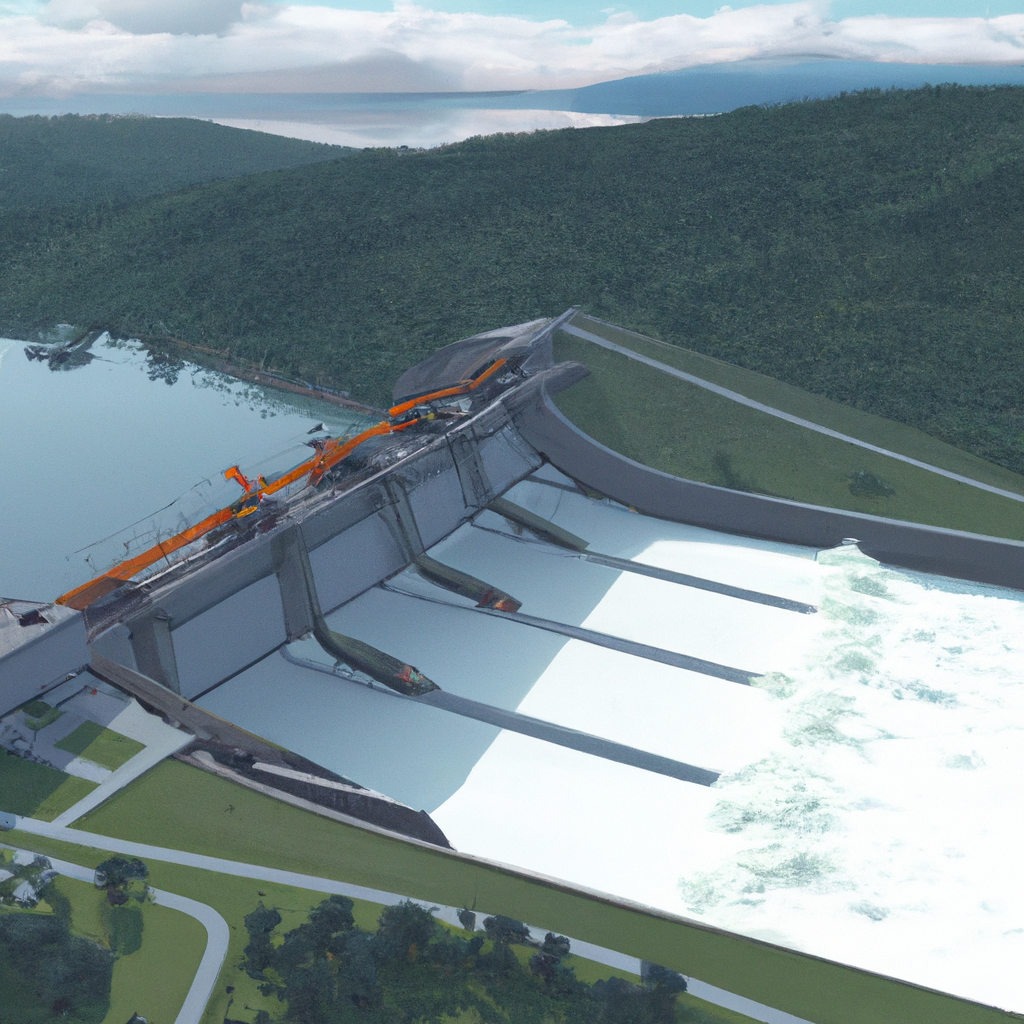Hydroelectric power is a renewable energy source that has become increasingly popular in recent years. A hydroelectric dam is a facility that harnesses the power of flowing water to generate electricity. In this article, we will explore how a hydroelectric dam works, from the initial water intake to the final electricity production. We will also look at the benefits of hydroelectric power generation, including its energy efficiency and environmental sustainability.
Water Intake
The first step in the hydroelectric power generation process is the intake of water. This water is typically sourced from a nearby river or lake and is channeled into the dam’s reservoir. The reservoir is designed to hold a large amount of water, which is then released through the dam’s turbines to generate electricity.
Water Turbines
Once the water has entered the reservoir, it is released through the dam’s turbines. These turbines are essentially large propellers that are turned by the force of the flowing water. As the turbines turn, they power a generator, which converts the mechanical energy of the turbines into electrical energy. The amount of electricity produced by the generator is directly proportional to the speed at which the turbines are turning. Therefore, the faster the water is flowing, the more electricity will be generated.
Electricity Production
The electricity produced by the hydroelectric dam is then sent to a transformer, which steps up the voltage of the electricity to a level that can be transmitted over long distances. The electricity is then sent out to the power grid, where it can be used by homes and businesses in the surrounding area. Hydroelectric power is a reliable and consistent source of electricity, as long as there is a steady supply of water flowing through the dam’s turbines.
Energy Efficiency
One of the main benefits of hydroelectric power generation is its energy efficiency. Unlike other forms of power generation, such as coal or natural gas, hydroelectric power does not produce any emissions or waste products. This makes it a clean and environmentally sustainable source of electricity. Additionally, hydroelectric power generation is highly efficient, with conversion rates of up to 90%. This means that almost all of the energy from the flowing water is converted into electricity, with very little waste.
Environmental Sustainability
Hydroelectric power generation is also environmentally sustainable, as it does not produce any greenhouse gases or other harmful emissions. Additionally, hydroelectric dams can help to mitigate the effects of climate change by reducing the amount of carbon dioxide in the atmosphere. This is because the reservoirs created by hydroelectric dams can act as carbon sinks, absorbing carbon dioxide from the atmosphere and storing it in the water.
Conclusion
In conclusion, a hydroelectric dam is a facility that harnesses the power of flowing water to generate electricity. The process begins with the intake of water, which is channeled into the dam’s reservoir. The water is then released through the dam’s turbines, which power a generator to produce electricity. Hydroelectric power generation is highly efficient and environmentally sustainable, making it an attractive option for countries looking to reduce their carbon footprint. As the world continues to transition towards renewable energy sources, hydroelectric power generation will likely play an increasingly important role in meeting our energy needs.







